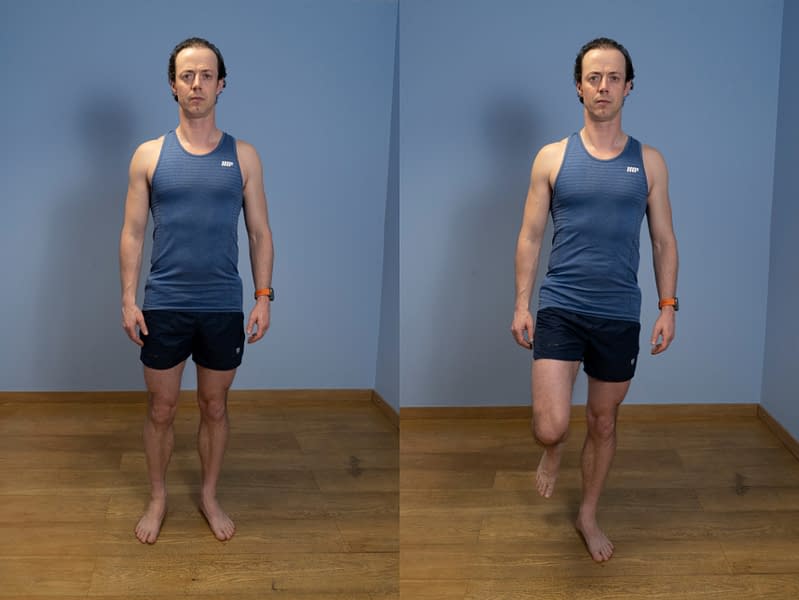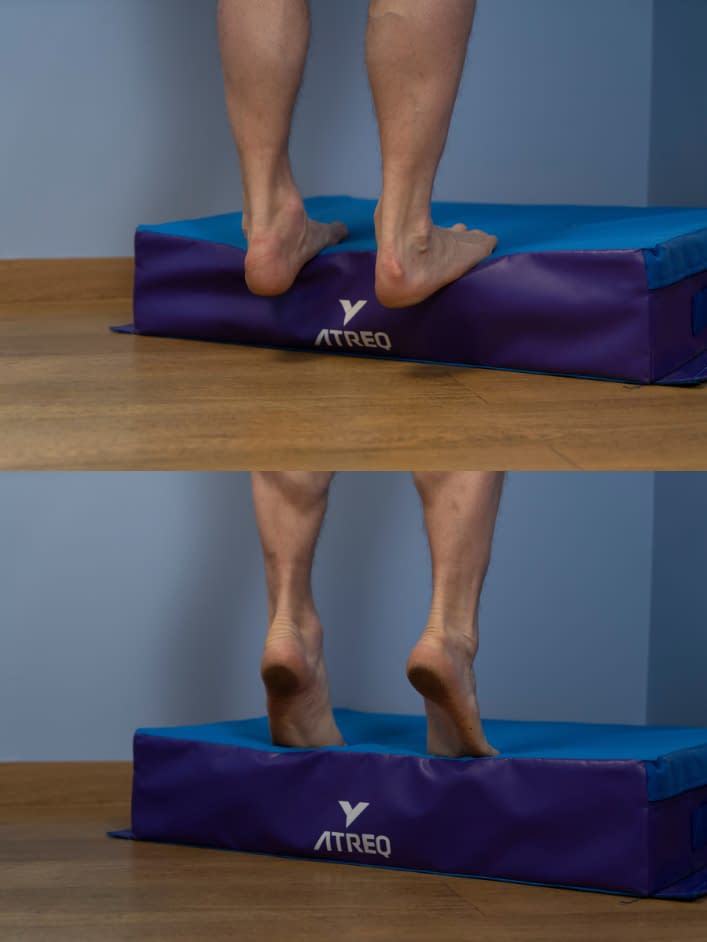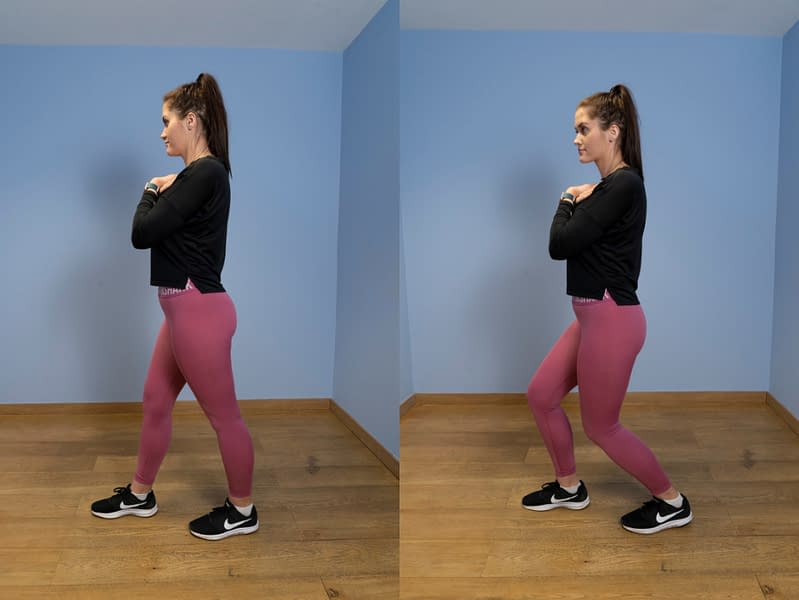Fifth Metatarsal Fracture Advanced Exercise Programme
Aim to perform this programme a minimum of once per day unless prescribed otherwise. As with any new exercise, start slowly (repetitions as able) and build up as you are able within the guidelines below.
Pain should not exceed 4/10 whilst completing this exercise programme.
1. Single leg balance – knee straight
- Perform this exercise barefoot or in socks, in a clear space near a wall/stable object and on a flat, non-slip surface.
- Shift your weight on to the affected leg then lift the supporting leg slightly off the floor – keep the knee straight.
- Look down at the knee and focus on balancing whilst keeping the knee in line with the hip and ankle – use the object/wall to prevent yourself falling.
- To progress, try looking straight ahead rather than down at the knee. To advance further, this can be performed with the eyes closed.
2. Double-leg heel raise from a step – straight legs
- Stand at the bottom of the step facing it.
- Stand upright on the step with only the front half of each foot on the step so that the heels drop down – have a wall/stable object nearby to assist with balance.
- Push down through the front of the feet as if going up on your tip toes – the heel will begin to rise.
- Lift the heels as high as possible and then with control, slowly lower the heels all the way down over the course of a 5 second count.
- Then repeat.
3. Split squat
- Place one foot forward and the other back to form a comfortable stride with the feet hip-width apart – you can gently hold on to something for balance.
- Keep the chest up and core engaged whilst simultaneously bending both knees so that the hips lower directly downwards – emphasis should be placed on pushing up through the front foot and keeping the knee in line with the hip and ankle.
- With the trailing knee just of the floor, hold this position for a count of 3 seconds before pushing down through the feet to straighten the knees and return to the starting position.
We recommend consulting a musculoskeletal physiotherapist to ensure exercises are best suited to your recovery. If you are carrying out an exercise regime without consulting a healthcare professional, you do so at your own risk. If you have any concerns whilst completing these exercises, please contact a healthcare professional.
More Plans
This programme focuses on maintaining and restoring range of motion to the ankle and foot complex. All exercises should be kept to a tolerable level of pain. This should not exceed more than 4/10 on your perceived pain scale.
- 0
- 1
- 2
- 3
- 4
- 5
- 6
- 7
- 8
- 910
This is the next progression. More focus is given to progressive loading of the foot and ankle to rebuild strength, stability and proprioception (proprioception refers to the body’s ability to perceive its own position in space). This should not exceed more than 4/10 on your perceived pain scale.
- 0
- 1
- 2
- 3
- 4
- 5
- 6
- 7
- 8
- 910


